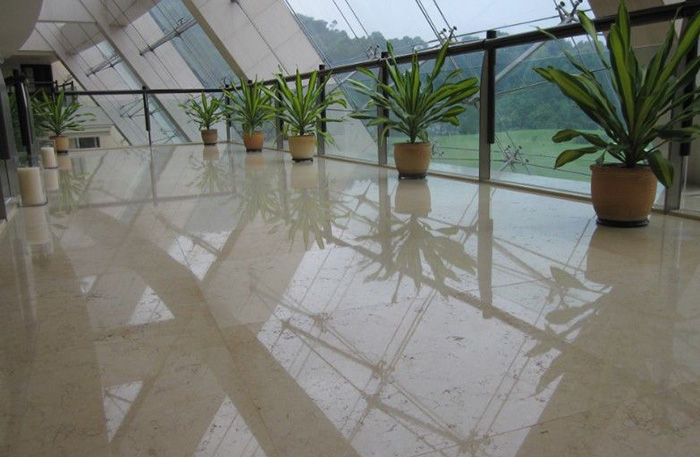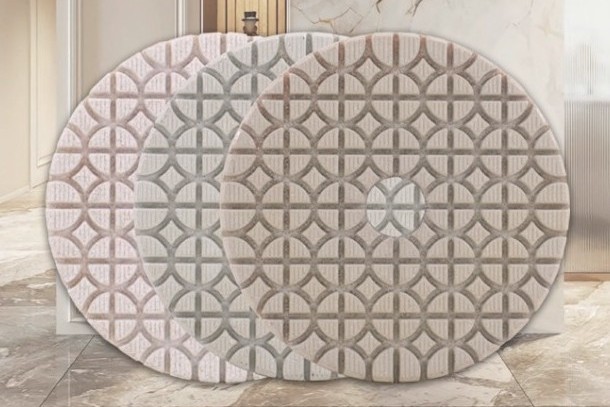Solving Wavy Patterns: Stone Floor Maintenance Tips

The meticulous process of polishing stone floors is designed to produce a smooth, even polished surface that enhances the beauty of interior spaces. However, in some cases, a wavy pattern may appear after the grinding process, diminishing the visual impact of the stone flooring. These undulating patterns are reminiscent of ripples on wind-swept water, indicating the irregular flatness of the ground. To ensure that the decorative effect of your stone flooring is preserved, it is important to understand the causes of these wavy patterns and take precautions to mitigate their occurrence.
Reasons for wavy patterns on the ground after grinding
Differences in seam height: One of the main reasons for a wavy pattern on the floor after sanding is due to height differences in the seams. In paving applications, joints between adjacent slabs often exhibit height differences, resulting in uneven surfaces. Therefore, to align the joints, the entire board may warp, with one side higher and the other lower. Therefore, when grinding on such uneven surfaces, a localized wavy pattern inevitably occurs, detracting from the required smoothness and uniformity.
Unreasonable paving technology amplifies wavy patterns: Using poor paving techniques, especially in larger areas, can result in a noticeable wave pattern after sanding. In this case, workers can use wire-pulling methods, including using nylon wire to determine the horizontal position and height of the road surface during the construction process. However, some potential issues with this approach can exacerbate the formation of wave patterns. When using nylon thread for long-distance pulls, the effects of gravity can introduce curvature issues, causing irregularities in a given position. This can lead to height variations at different points on the surface, ultimately leading to a wavy pattern after grinding. Differences in wire quality and inconsistent tension applied by workers can cause deviations from the established position, creating an environment conducive to the appearance of wavy patterns during the sanding process. Unforeseen events during construction, such as unexpected interference with nylon threads or repositioning of threads due to external factors, may cause changes in height differences. As the paving area increases, the potential for these error amplification effects also increases, resulting in a more pronounced and pervasive wave pattern on the ground after grinding.
Grinding disc selection: Grinding disc selection is a key factor in causing the wave pattern to form on the grinding surface. An often overlooked aspect in this context is the heterogeneity of the material being ground. Gemstones, in particular, exhibit varying degrees of hardness and softness on their surfaces, as well as different levels of wear resistance. When stone is ground with abrasive particles, the interaction between the grinding disc and the heterogeneous surface causes ripples to appear. Small abrasive particles are pushed across the stone surface under the pressure and speed exerted by the grinder. This movement often causes particles to rapidly transition from softer to harder areas of the stone. When the abrasive grains pass through the stone, the softer parts tend to be ground deeper due to lower resistance, while the harder parts are easily scratched and under-grinded. The juxtaposition of deeply ground softer areas and improperly treated harder sections can create a localized wave pattern on the floor surface, compromising the desired smooth and even finish.
Solving machinery selection issues: The choice of grinding machine and machine specifications play a key role in determining the tendency for wave patterns to appear after grinding. When selecting a grinder, factors related to its width and coverage area are important considerations in reducing the appearance of wavy lines. Wider grinders enhance smoothing, cover a larger surface area, and increase polishing power. By choosing a grinder with a wider width, professionals can reduce the likelihood of a wavy pattern appearing after grinding. A machine with a wide coverage and polishing area is less likely to create a wavy pattern on the ground. Maximizing coverage area through smart mechanical choices can help achieve a more uniform and visually appealing floor finish.
Measures to Prevent the Occurrence of Wavy Lines
Choose the Right Grinding Disc
To prevent wavy lines, it is crucial to choose the right grinding disc. The selection of grinding discs should be consistent with the specific stage of the grinding process. The number on the grinding disc indicates its grinding capacity. 50#, 100#, 200#, and 400# grinding discs are suitable for grinding. 800#, 1500#, and 3000# grinding discs are mainly used for polishing because the grinding force is minimal at this stage.
For grinding discs from 50# to 400#, you must choose grinding discs with large particles and thickened designs. Large particles can effectively penetrate soft and hard materials, ensuring a more even grind. Choosing a small-grain disc designed for soft materials may result in deep cuts in soft areas, creating a wavy pattern. It's worth noting that abrasive discs with flakes and small particles have their uses, as they work well on uniform stone floors to meet specific grinding needs. After using 800#, 1500#, and 3000# grinding discs to complete the grinding and polishing stages, switching to small particle flakes is advisable. As the grinding effect diminishes in later stages, the main function of the grinding disc is to produce a shiny surface. Using discs of small particles and flakes at this stage enhances the stone surface, resulting in better light production.

The Correct Choice of Grinder
Grinding Width: A Factor in Stability and Leveling Ability
The grinding width of a machine has a significant impact on its stability and leveling capabilities. Generally speaking, a larger grinding width can enhance the stability of the machine, reduce vibration, and ensure a smoother grinding process. Especially suitable for treating uneven stone floors. Machines with wider grinding widths (from 500 mm to 600 mm) exceed the capabilities of smaller machines with a width of 300 mm. Wider grind width allows for better coverage and increased efficiency, resulting in more consistent and even grinding results.
Weight and Speed Valance: Crucial for Optimal Grinding Conditions
Achieving a balance between the weight and speed of your grinder is critical to preventing wavy lines during grinding. When treating stone floors, the combination of higher machine weight and lower RPM creates ideal conditions for the abrasive disc particles to effectively cut into soft areas without causing deep indentations. In addition, applying appropriate weight and moderate rotational speed allows the grinding disc to move back and forth between soft and hard materials, minimizing the grinding intensity of softer parts and mitigating the formation of uneven patterns. It is important to note that too high a rotational speed can cause instability and machine shaking, which can hinder the leveling process and lead to wavy lines.
The Importance of Grinding Machine Shock Absorption
The quality of the shock absorber is a key factor affecting the grinder's stability and liquid-level control capabilities. Rubber pads play a vital role in shock absorption because they are installed on the grinding disc to reduce vibration and maintain stability during the grinding process. High-quality shock-absorbing pads are relatively stiff and effectively disperse forces while maintaining minimal deformation. This ensures machine stability, resulting in smooth, uninterrupted grinding. In contrast, poor-quality shock pads are typically softer in composition and prone to excessive deformation, resulting in an unstable and bumpy grinding experience.
Pay Attention to The Speed of Travel
Uniform travel speed: When grinding stone surfaces, maintaining a uniform travel speed is critical to achieving an even and consistent finish. Sudden starts and stops and changes in speed can cause surface irregularities and form wavy lines. Instead, it is recommended to continue moving forward or backward at a steady and even speed until the entire ground is worn. This method minimizes the risk of uneven wear and helps create a smooth, polished surface.
Operational precision: Stone grinding and polishing, especially when working within the 1000#~3000# particle size range, requires precision and meticulous attention to detail. Even small grains of sand can cause deep scratches during the grinding process. It is therefore vital that the work is carried out with precision and care, making every effort to ensure that all grinding and polishing operations are performed with precision and consistency. By prioritizing accuracy, the risk of irregularities, including wavy lines, can be significantly reduced.
Environmental Considerations: While mud, water, and dust may be prevalent on a job site, it is critical to take steps to minimize their impact on the grinding process. Environmental factors can affect the integrity of grinding and polishing operations and lead to the formation of surface defects in stone. Controlling the surrounding environment, including managing humidity and minimizing debris, helps maintain the quality and precision of the grinding process.
 English
English  Português
Português  русский
русский  Chinese
Chinese  French
French  Japanese
Japanese  Spanish
Spanish  Italian
Italian 



